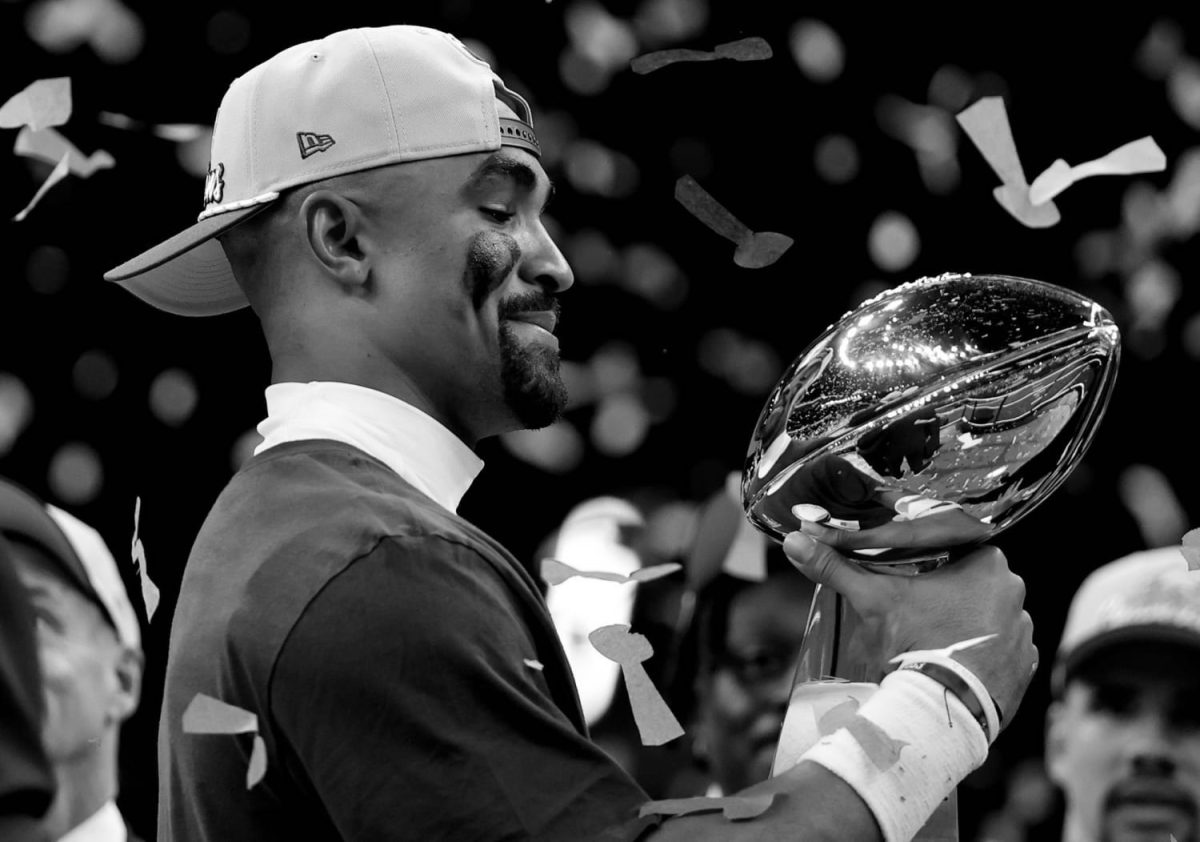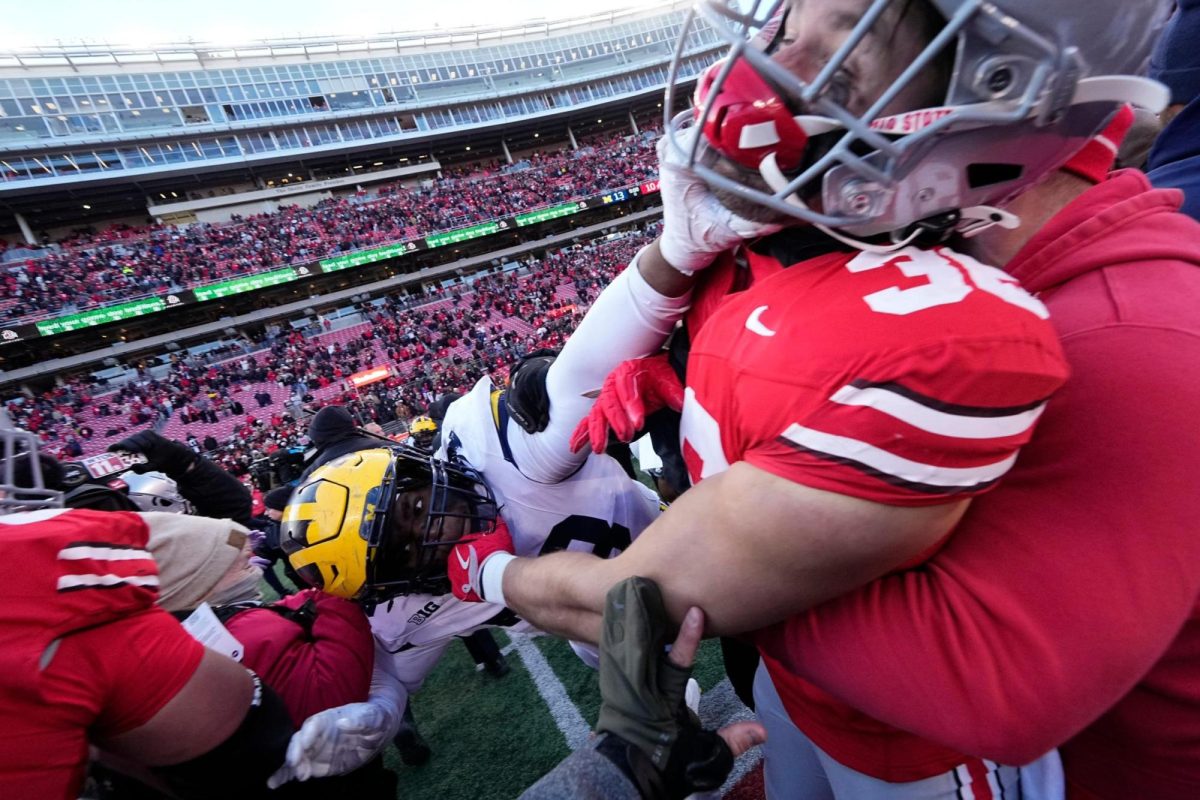Ask any football fan about rivalries in college football, and most will bring up one: the rivalry between The Ohio State University and the University of Michigan. For any Ohio State fan, including myself, “The Game” against Michigan is a day comparable to, or even bigger than, a major holiday. Before the game, the letter “M” — Michigan’s logo — is crossed out with a red X, and so the game is referred to as “The GaXe,” and Michigan as “Xichigan” or “TTUN” — The Team Up North. Even though it’s a relatively new event for me to watch, screaming at referees on TV while eating from a Tupperware of leftover Thanksgiving food is surprisingly becoming one of my new favorite traditions. Besides the actual football, in-person fans have the opportunity of watching Brutus Buckeye parade around and The Ohio State Marching Band dotting the I. But the 126-year-old rivalry looked a lot different this year than it has before, and that’s for two reasons.
First, to state the obvious, Ohio State is not going into the game as strong as it used to be. For the first time since the 1995–97 seasons, Michigan is now on a three-game winning streak, after breaking Ohio State’s eight-game winning streak from 2012–2019. These losses have been primarily blamed on Ryan Day, who began serving as Ohio State’s head coach in 2019. Often, these criticisms are not suggesting that he is doing a bad job at leading the program. Day has a 56–7 record, one Rose Bowl win, and two Big Ten championships. Prior to this year’s game, Ohio State was ranked No. 2 and even afterward, fell down to just sixth. However, out of the four Michigan games he’s coached, Day is 1–3. For many Ohio State fans, this year’s game was particularly painful to watch, as Michigan won 30–24, even with Head Coach Jim Harbaugh out on a suspension due to the sign-stealing scandal led by former football analyst Connor Stalions. In some way or another, the offensive or defensive side faltered through Day’s coaching. Even with an excellent regular season for Ohio State fans and coaches, the wins against other teams during the regular season will never carry as much weight as The Game itself, because Ohio State is such an exceptional team in the division, statistically. For instance, they are currently second in the Big East division.
Second, the expansion of the Big Ten has a significant impact on how The Game will function as a whole. Currently, the Big Ten is split into two divisions: East and West. Ohio State and Michigan are both in the Big East, but they only play each other toward the end of the season, before the divisional championships. However, in 2024, UCLA, USC, University of Oregon, and University of Washington will be moving out of the Pac-12, a predominately West Coast conference, and into the Big Ten, a predominately Midwest and partially East Coast conference. Of course, the move has been criticized by many, and the rivalries for these four schools will be disrupted. For schools already in the Big Ten, this means that divisions will be eliminated. Even with the “Flex Protect Plus” model, created in an attempt to protect some of the historic rivalries, there is still the chance that Ohio State and Michigan will play against each other not once, but twice in one year, if both of them qualify for the championship game.
So what does the future look like for Ohio State football fans? So far, not good. The sanctity of a historic rival and close competition is now a thing of the past, and there are already angry fans and journalists alike writing columns about how Ryan Day should go coach at Texas A&M instead. What seems like the simple expectation of winning a game against Michigan now seems like a dream of the distant future, perhaps in another five years. And fans from both sides may now have to travel twice to watch the rivals play. It seems like only time will tell how they as a collective will react and adapt to these new changes.











